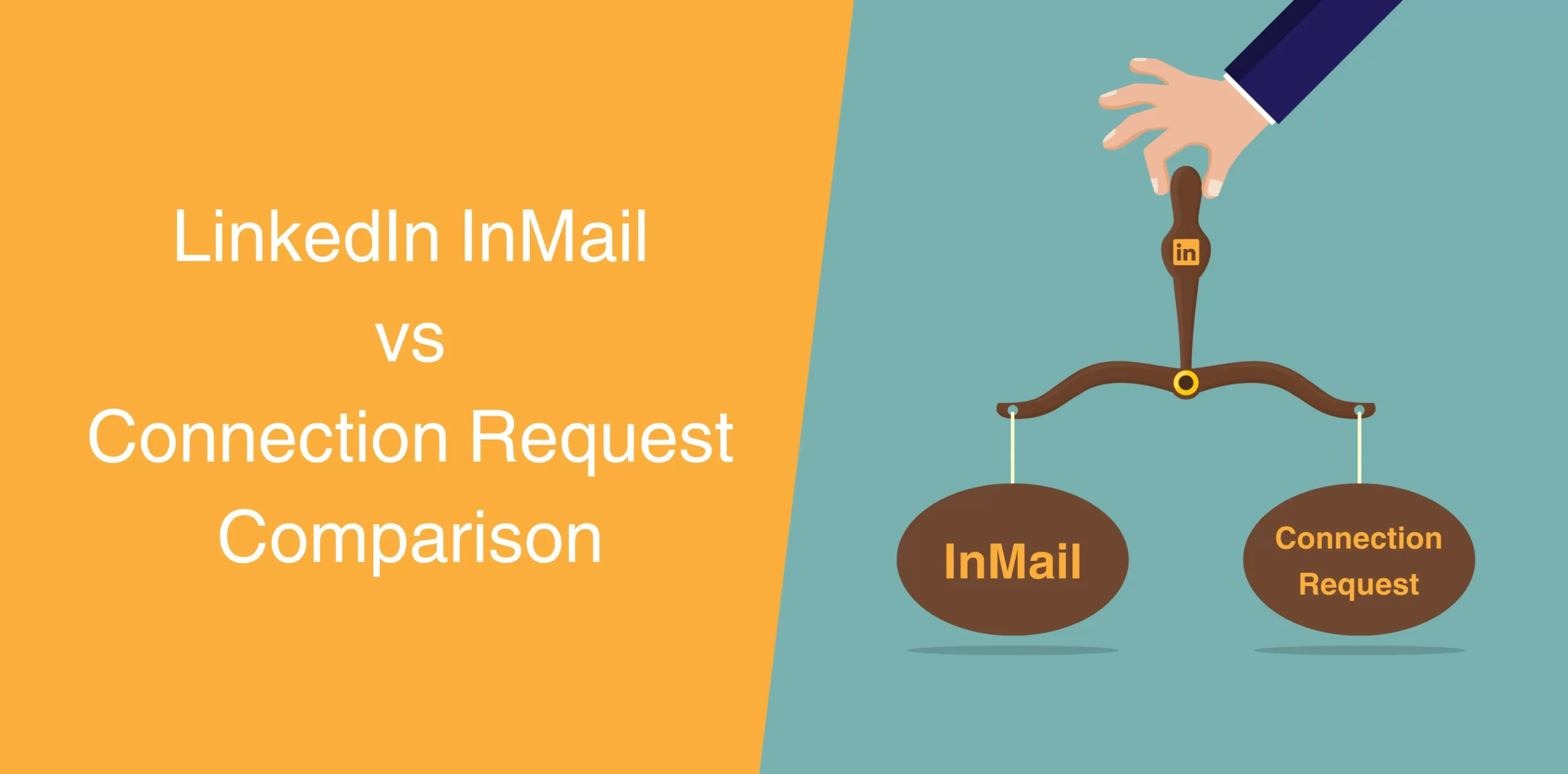Are you feeling a bit lost in the world of LinkedIn outreach, caught between the allure of InMails and the simplicity of Connection Requests? Don’t worry; it happens to the best of us.
When you’re trying to connect with people beyond your immediate network on LinkedIn, you’ve got two main options:
- Send a connection request;
- Send an InMail.
Both options have their pros and cons, we’ll break down the details of LinkedIn InMail vs Connection Requests. We’ll explore the difference between connection request and InMail to give you the insights you need to make an informed decision.
How Does LinkedIn InMails Work?
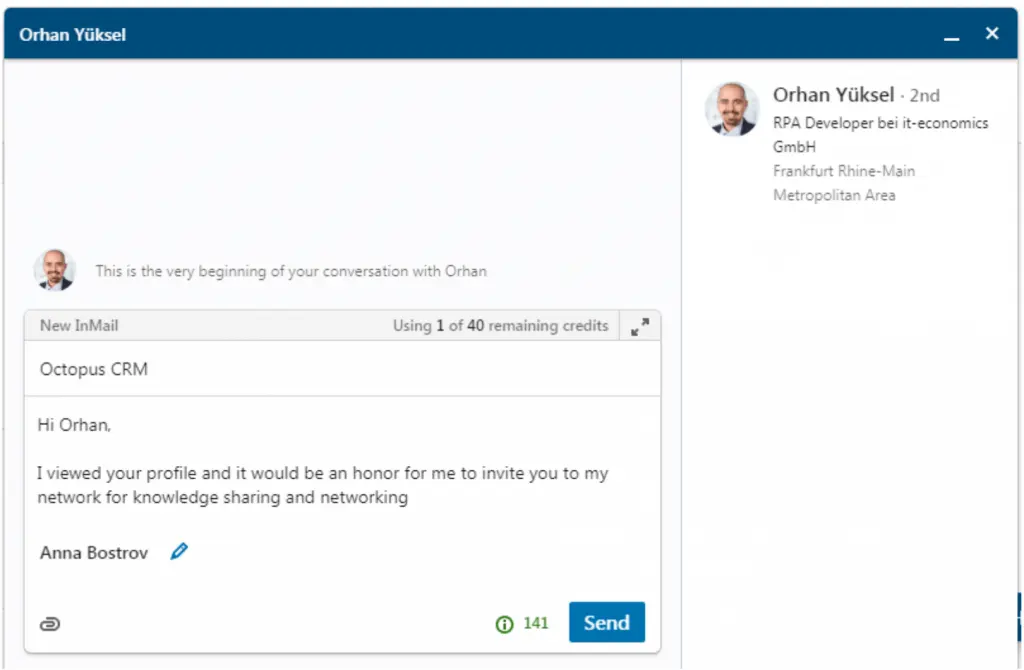
Let’s start by demystifying InMails.
Think of them as your special passes to connect with anyone on LinkedIn, even if they’re not your 1-degree connections. InMail credits allow you to directly send your message to the inbox of potential leads.
In other words, LinkedIn InMail is like the VIP messaging service on LinkedIn, but you’ll need a special ticket – LinkedIn account type like LinkedIn Premium, Sales Navigator, or Recruiter. The cool thing about InMail is that you can reach out to anyone on LinkedIn without having to send a connection request first.
Now, here’s a neat feature: you get to add a subject line to your InMail messages. When your message lands in someone’s main inbox, it stands out with a label saying “InMail”, and the subject line takes the spotlight, replacing the usual preview. This makes your message more noticeable and gives a quick preview of what it’s about.
So, InMail is not just about sending messages; it’s about sending messages that really catch attention.
Read the other comparison article: LinkedIn InMail vs Email
How LinkedIn Connection Requests Work?
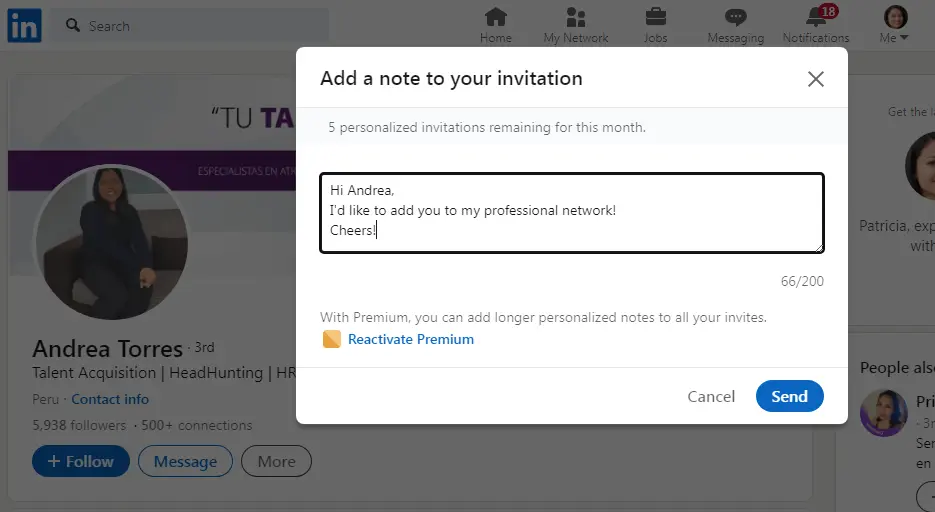
On the flip side, Connection Requests are the digital handshakes of LinkedIn. You send them to connect with someone, and when they accept your request, you gain access to their updates and profile information. In fact, the Connection Request feature is the foundation of networking on the platform.
This means you can use Connection Requests to invite your 2nd and 3rd-degree connections to join your network on LinkedIn, making them your 1st-degree connections.
You have the option to send these requests with or without a note. Regardless of your choice, your prospects get a peek at your LinkedIn profile picture.
Now, once these folks become your 1st-degree connections, the real networking magic begins. You can send them direct messages, opening up a direct line of communication.
Plus, they’ll see your posts pop up on their LinkedIn feed, helping you stay on their radar and fostering a closer professional connection. It’s like building a bridge for more meaningful interactions in the LinkedIn world.
Check the best LinkedIn InMail templates and InMail best practices for a better response rates.
InMail vs. Connection Request
The choice between InMail and Connection Requests is a common crossroads. Both options come with their own set of advantages and disadvantages.
Let’s have a look at the pros and cons of LinkedIn InMail and Connection Request.
LinkedIn InMail Pros
InMail is a personalized messaging service that offers many benefits for prospecting and lead generation on LinkedIn. Let’s have a look at some LinkedIn InMail advantages you can leverage as a B2B sales professional. Discover, why use LinkedIn for B2B marketing.
Straight to the Inbox
The primary allure of InMails lies in their ability to sidestep the connection request dance. Landing directly in the inbox of your 2nd and 3rd-degree connections, InMails provides a distinct advantage.
Unlike connection requests, where the recipient may or may not click to reveal your note, an InMail ensures that your entire message is visible when opened. This increases the likelihood of your prospect not just receiving but actually reading your message.
No Need to be Connected
This means you’re free to message anyone on LinkedIn, even if they’re not in your current network. It makes your outreach efforts way more inclusive and broad, giving you the flexibility to engage with a whole bunch of new people. It’s like widening your LinkedIn horizons without any connection barriers. Easy and open!
Send Free InMails to Open Profiles
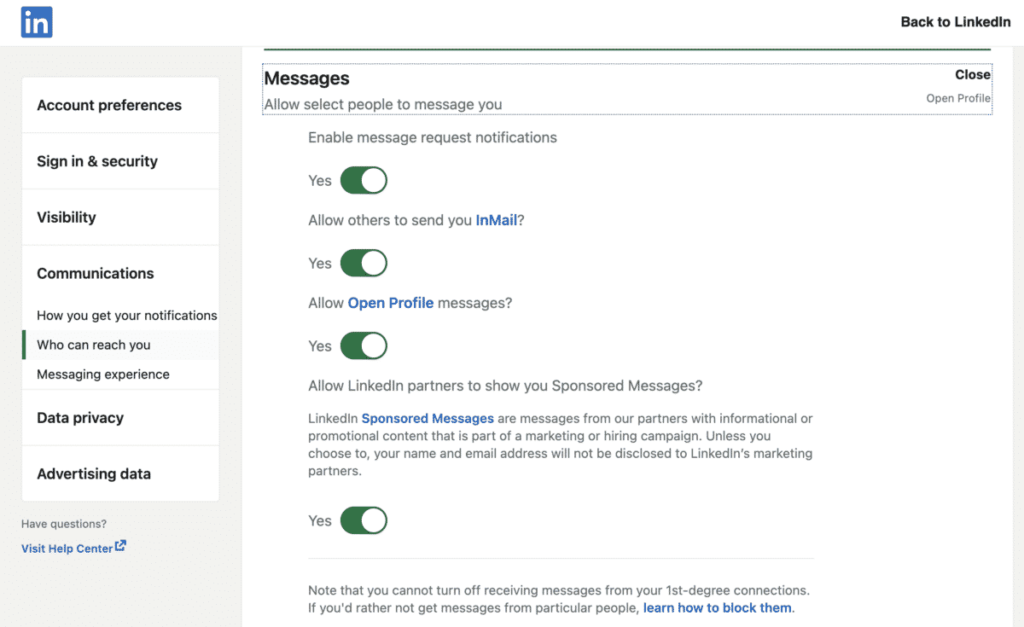
Now, here’s the golden ticket for sending unlimited InMails without spending a dime – Open Profiles. These are LinkedIn premium members who have willingly opened their doors to be contacted by anyone on LinkedIn.
But how do I find open profiles?
When you open a profile on LinkedIn and click on the More button, you’ll notice a special note indicating that the InMail is free. This means you have to be adept at manually sifting through profiles in order to spot open profiles.
But the good news is that the best LinkedIn automation tools, such as Octopus CRM, can help you quickly identify open profiles. Simply export your list of profiles as CSV using a LinkedIn automation and check out the column for open profiles.
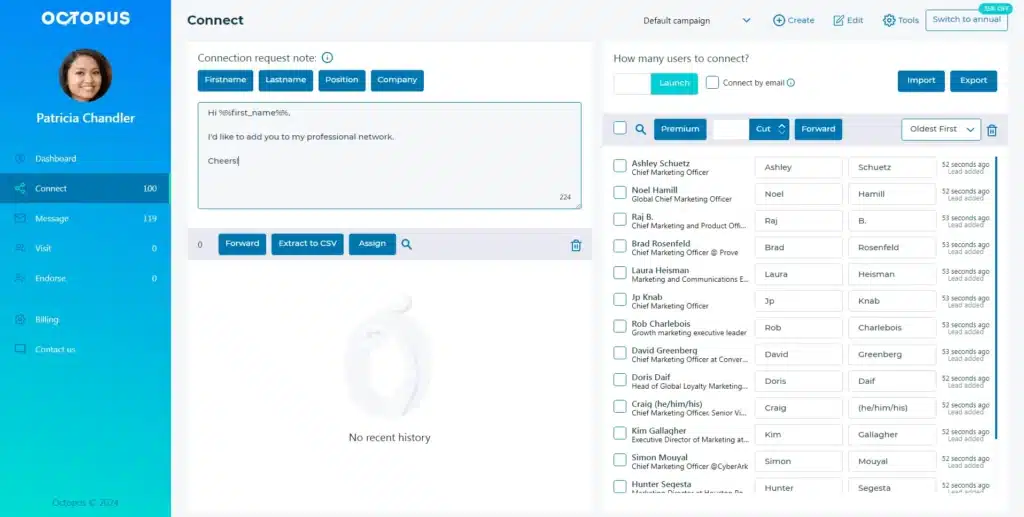
Once you’ve identified an Open Profile, you can send them free InMail right away.
Explore how to use Octopus CRM for LinkedIn lead generation.
LinkedIn InMail Cons
Before you delve into getting a premium subscription to use LinkedIn InMail, let’s explore some LinkedIn InMail disadvantages.
Premium Feature
The first hurdle is the cost. To use InMails, you need to purchase InMail credits, and that requires having a premium LinkedIn account.
Whether you opt for Sales Navigator, Recruiter, Premium Career, or Premium Business, each account comes with its own monthly quota of InMails.
It’s a pay-to-play system that might not align with everyone’s budget.
Limited Follow-Up Opportunities
Another significant drawback is the inability to send follow-up messages via InMail if you don’t receive a response. You’ve got just one shot to capture attention and get a response.
This means your initial message needs to be compelling and effective from the get-go.
The absence of follow-ups can be frustrating, but it’s LinkedIn’s way of curbing spam and maintaining a quality user experience.
The Copywriting Challenge
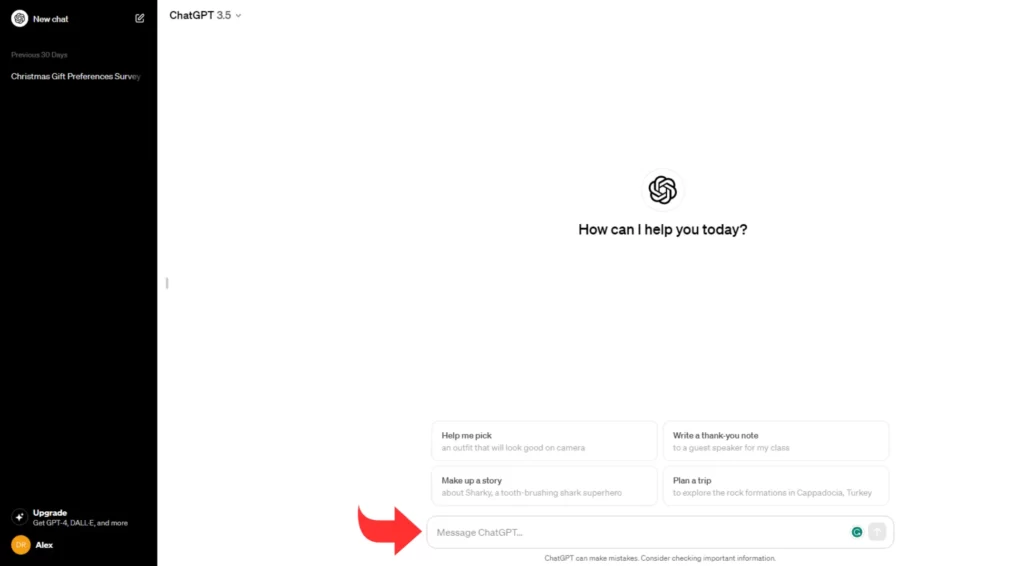
With only one chance to make an impression, your copywriting skills take center stage. Crafting a persuasive and engaging InMail is essential, as there’s no opportunity for a do-over.
This limitation underscores the importance of honing your communication skills to maximize the impact of your initial message. But don’t worry because you can use generative AI tools like ChatGPT to write impactful messages for you.
Discover the ways to leverage LinkedIn InMail effectively.
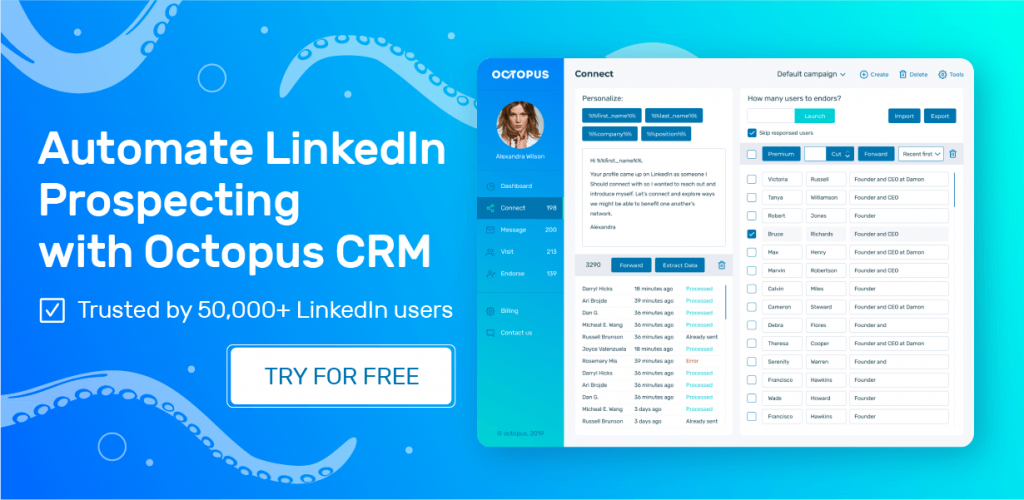
LinkedIn Connection Request Pros
Explore LinkedIn connection requests advantages and learn how you can use this feature to grow your network and engage more effectively.
It’s More Than Just a Request
The magic of connection requests? Once accepted, they transform individuals into your 1st-degree connections. This opens up doors for more visibility – your LinkedIn posts show up in their feed.
This means if you’re aiming to get noticed and attract leads, sending connection requests is your ticket to natural network growth.
Playing the Long Game
Think of connection requests as planting seeds for long-term connections. Being 1st-degree connections allows you to build relationships over time.
Studies say it takes about 8 touchpoints to seal the deal with a prospect. So, when you connect, you actually up the chances of creating those touchpoints naturally through regular feed visibility and direct messaging.
The Natural Way to Connect
Connection requests follow the way we naturally connect with friends or colleagues. They’re not pushy. This makes the interaction feel genuine.
Unlike InMails, connection requests don’t come with that sales pitch vibe. It’s a more casual and authentic way to build professional relationships.
Dodging the Salesy Trap of InMails
InMails often trigger expectations of a sales pitch, contributing to a negative perception. Connection requests, in contrast, come off as more personable. Connection requests help you sidestep this stigma and engage in a way that feels real.
Beating the InMail Spam Game
InMails have become synonymous with spam, making them less effective. Many people now ignore InMails for its spammy reputation.
Connection requests, on the flip side, are more likely to grab attention and spark positive engagement as they’re authentic requests to connect and engage.
Related article: Write a Perfect LinkedIn Connection Request Message
LinkedIn Connection Request Cons
Sure, connection requests have many pros, but they also have their shortcomings. Below we have explained some LinkedIn connection requests disadvantages you should take into account.
Hidden in the Connection Request Tab: Less Attention
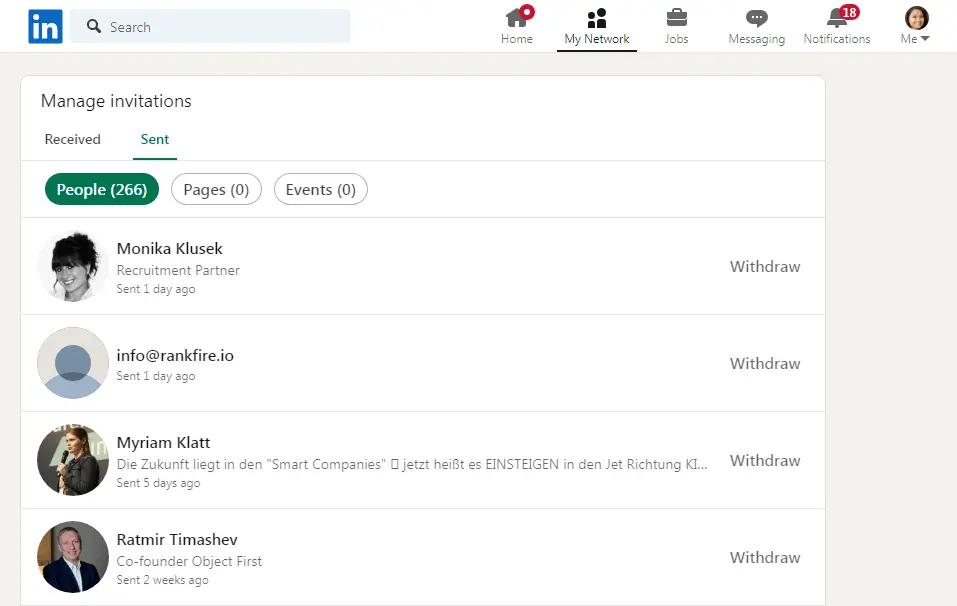
Unlike InMail, which goes straight to the inbox, connection requests end up in a separate tab.
This presents two challenges: you can only write a short 200-character note, and the preview is super brief.
Most people won’t bother clicking “See more” to read your message, especially if you’re a stranger trying to sell something.
Limited to 100 Connection Requests Per Week
LinkedIn has put a cap on the number of connection requests you can send each week, dropping it from 700 to 100.
But wait, there’s a trick to go around this limitation – LinkedIn email invites. You can’t add notes with email invites, but you can send 200 connection requests weekly. This hack is handy if you’re all about quantity in your outreach.
If you’re into high-volume prospecting, you can skip the notes in your connection requests and go for the LinkedIn email invite hack. But if you’re okay with sending fewer than 100 connection requests per week and want that personal touch, add notes to your requests.
InMail vs Connection Request: What Gets More Replies?
Deciding between InMail messages and Connection Requests boils down to your goals and the specific situation. In general, it is a good idea to go for InMail messages when reaching out to industry leaders or decision-makers who might appreciate the personalized touch. They tend to respond well to a tailored message delivered through InMail.
On the other hand, if you want to engage with someone you already know or who’s shown interest in your work or industry, a Connection Request may be the smoother and more effective option. The informal nature of Connection Requests aligns well with existing connections or those with a prior interest, making it a friendlier way to expand your professional network.
Conclusion
Now that we’ve sliced and diced LinkedIn InMail vs Connection Request, you are in a good position to make an informed decision. But our take is that instead of choosing between InMails and Connection Requests, the smart move is to use both strategically. Each has its perks, so combining them gives you the best of both worlds.
InMails are great for precision, while Connection Requests help you reach a broader audience. Mixing them up creates a balanced strategy that covers all the bases and overcomes the limitations of each method.
It’s like having a toolbox with different tools – you use the right one for the job at hand.
